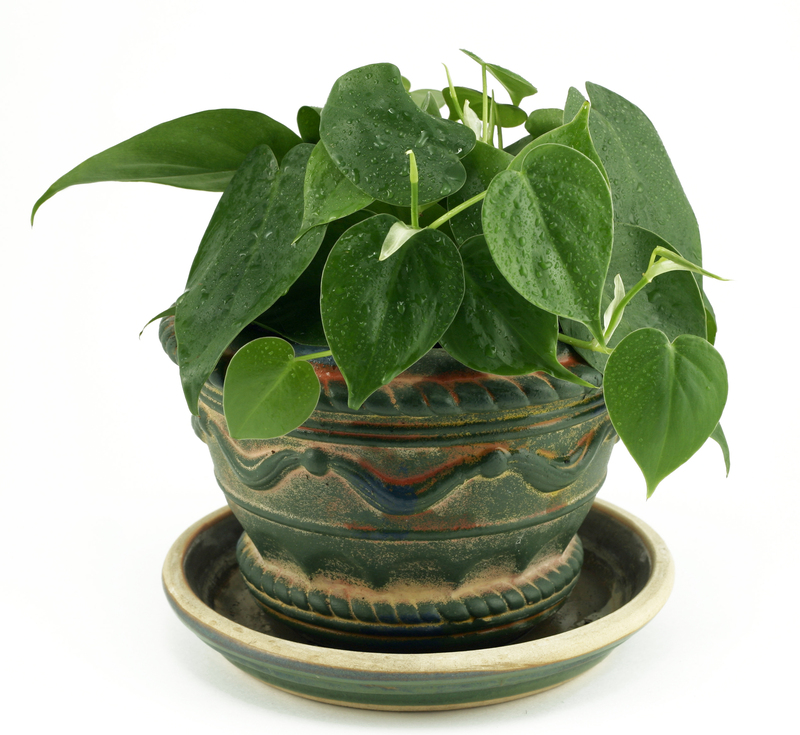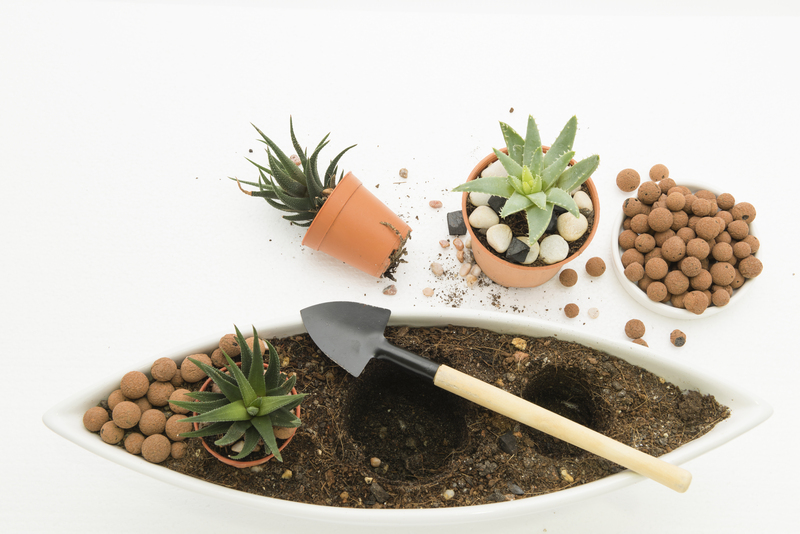Expert Tips to Secure Your Garden Plants This Winter
Posted on 11/09/2025
Expert Tips to Secure Your Garden Plants This Winter
Winter is a challenging season for gardening enthusiasts, but with careful planning and the right plant protection strategies, you can ensure your favorite perennials, shrubs, and vegetables endure the cold season unscathed. Securing your garden plants in winter not only preserves your hard work but also sets the stage for a vibrant, flourishing garden when spring arrives. In this article, we'll share comprehensive, expert-backed tips for winterizing your garden, covering every aspect from soil care to creative covering solutions.

Why Is Winter Plant Protection So Important?
Many gardeners underestimate the impact of freezing temperatures, frost, wind, and fluctuating weather on their plants. When exposed to extreme conditions, delicate roots can freeze, stems can desiccate, and growth may be stunted or entirely halted. Winter garden plant care is essential for:
- Preserving perennial plants through sub-zero temperatures
- Protecting roots from frost-heave and dehydration
- Shielding tender new growth and evergreen foliage from wind burn
- Maximizing your garden's productivity season after season
Understanding Your Plants' Winter Needs
Every plant species behaves differently when temperatures drop. Some, like cyclamen and snowdrops, thrive in winter, while others require extra care. Be sure to:
- Identify cold-hardy vs. tender plants: Perennials and hardy shrubs usually tolerate freezing weather, whereas annuals and exotics may need extra protection or bringing indoors.
- Know your USDA Hardiness Zone: This determines which plants can naturally withstand local winter lows.
- Research your plants' specific requirements: Understand watering, light, soil, and wind protection needs during winter months.
Top 10 Expert Tips to Protect Garden Plants in Winter
1. Mulching: The First Line of Defense
Applying a generous layer of mulch is one of the most effective ways of securing garden plants for winter. Mulch:
- Insulates roots against sudden temperature swings
- Keeps soil temperature stable
- Prevents frost-heave, where roots are pushed out by free-thaw cycles
- Reduces moisture loss
- Enriches the soil as it breaks down
Use organic materials such as straw, shredded leaves, bark chips, or compost. Apply 2-4 inches around the base of plants, but avoid direct contact with stems or crowns to prevent rot.
2. Watering Wisely Before the Freeze
Plants that enter winter well-watered are less likely to become dehydrated. Before the ground freezes, deeply water garden beds. Moist soil retains heat better than dry soil, protecting roots from damage.
- Monitor rainfall; supplement as needed in dry spells
- Water evergreens and newly planted trees up to hard freeze
- Avoid overwatering, as it may cause rot in poorly drained soil
3. Shielding with Protective Covers
Garden plant coverings for winter help insulate vulnerable plants and buffer them from wind and frost. Effective covers include:
- Burlap sacks or landscape fabric (avoid plastic, restricts air flow)
- Frost cloths or horticultural fleece--great for flower beds
- Old bed sheets or breathable blankets for emergency frost protection
Stake covers loosely over plants to avoid crushing foliage. Secure edges to prevent wind from dislodging.
4. Cloches and Cold Frames for Tender Plants
Fragile annuals and veggies benefit from extra insulation in winter. Use cloches (bell-shaped glass or plastic domes) or cold frames (miniature greenhouse boxes) to safeguard them. These methods create a microclimate, trapping warmth and boosting survivability.
- Ideal for lettuces, spinach, herbs, and young seedlings
- Remember to ventilate during sunny days to prevent overheating
5. Windbreaks: Shielding Against Harsh Winter Winds
Cold winds can damage leaves, dehydrate plants, and accelerate soil moisture loss. To protect garden plants from winter winds:
- Build temporary wind barriers using wooden lattice, snow fencing, or burlap screens
- Install windscreens on the windward side of your most vulnerable plants
- For long-term strategy, grow evergreen hedges as windbreaks
6. Pruning for Health and Resilience
Late autumn is a good time to prune dead, damaged, or diseased wood to prevent further injury from snow and ice. Take care not to:
- Prune spring-flowering shrubs; wait until after they bloom
- Remove too much live growth, which can increase vulnerability to cold
Pruning facilitates stronger structure and reduces the risk of branches snapping under snow load.
7. Raised Beds and Proper Drainage
Raised beds naturally warm up faster and drain better than traditional garden beds--a definite boon for winter garden plant security. To improve drainage and root health:
- Amend heavy clay soil with compost or sand
- Ensure raised beds are at least 12-18 inches high
- Avoid water pooling by maintaining slopes and clear drainage channels
8. Overwintering Potted and Container Plants
Plants in containers are especially susceptible to cold, as pots lose heat quickly. Help your potted plants survive winter by:
- Moving pots against sheltered south-facing walls
- Grouping pots together for shared warmth
- Wrapping containers with bubble wrap, burlap, or old blankets
- Raising pots onto feet to prevent waterlogging
Consider moving tender perennials indoors or into unheated garages if truly cold weather threatens.
9. Leveraging Snow: Nature's Winter Blanket
While it might seem counterintuitive, snow acts as an excellent insulator, protecting roots and crowns from temperature extremes. If heavy snow is forecast:
- Allow a layer to remain over garden beds
- Gently shake snow off fragile branches to prevent breakage
- Do not remove all snow from lawns or bulbs, as insulating benefits outweigh negatives
10. Monitoring for Winter Pests and Diseases
Despite the cold, some pests, such as rodents, deer, and fungal organisms, remain active and can damage unprotected roots and stems. Watch out for:
- Gnawing marks or burrows near trees and shrubs
- Slime or fungal growth--spread can be slower, but not absent
- Wrap tree trunks with guards to prevent animal chewing
Bonus Winter-Proofing Tips from Gardening Experts
- Start with healthy plants: The stronger your plants entering winter, the more likely they'll survive. Fertilize and water appropriately prior to cold.
- Reduce foot traffic on frozen lawns and beds: This prevents soil compaction and physical damage to dormant plants.
- Label and map your garden: Use weatherproof tags or create a digital garden map, so you remember where to expect growth in spring.
- Clean up debris: Remove fallen leaves and dead plants that can harbor pests and diseases over winter.
- Check regularly: Inspect covers, mulch, and pots after storms or thaws to make needed adjustments.
Frequently Asked Questions About Protecting Garden Plants in Winter
What is the best time to mulch my garden for winter protection?
Apply winter mulch after the first hard frost but before consistent snow. This ensures rodents are less likely to nest and that soil is cool enough for dormancy but not yet frozen, maximizing insulation.
Can I use plastic to cover my garden plants during winter?
It's best to avoid plastic, as it traps moisture, restricts airflow, and can actually lead to condensation and rot. Choose breathable materials like burlap or horticultural fleece instead.
How do I prepare my vegetable garden for winter?
Pull up and compost dead crops, add well-rotted manure or compost to enrich soil, and cover bare soil with mulch or a cover crop. Protect overwintering vegetables with cloches or fleece as needed.
Should I prune roses in autumn before winter?
Light pruning (removing dead or damaged canes) is fine in late fall, but save major pruning for late winter or early spring. In colder climates, mound mulch at the base for extra protection.

Securing Your Garden Plants This Winter: A Recap
To secure your garden plants over winter, remember these essential steps: mulch generously, water thoroughly, protect with covers, insulate containers, prune wisely, enhance drainage, create windbreaks, and guard against pests. Each action forms part of a comprehensive plan to nurture your plants through cold, snow, and ice.
Investing time in winter plant protection doesn't just ensure survival--it boosts growth and vitality for the coming year. Armed with these expert tips and a proactive approach, your garden will emerge from the last frost greener and more robust than ever. Happy gardening!

